BY: PAMELA SCHAEFFER, PhD
In the late 1980s, at least two economic factors converged to jeopardize the future of nonprofit health care. For-profit health care companies, aggressively seeking opportunities for growth, were challenging the tax-exempt advantage of nonprofit health care, and the U.S. Congress, struggling with a growing federal budget deficit, had begun eyeing the $4.5 billion in tax exemptions for nonprofit hospitals as a new revenue source. Even more alarming, some within Catholic health care, including some sponsors, were questioning whether Catholic health care had become too business-oriented to continue as a viable ministry of the church.
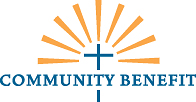 Two important articles marked the poles of what would become a widespread public discussion. In 1987, Harvard business school professor Regina Herzlinger had published her research in the Harvard Business Review, with the conclusion that there was little difference in the amount of uncompensated care provided by for-profits and nonprofits. A few months later, Herzlinger's conclusion was contradicted by authors of an opinion piece entitled "Setting the Record Straight" in the May 5, 1988, issue of The New England Journal of Medicine. The authors, Larry Lewin and Tim Eckles of the Lewin Group and Linda Miller for the Volunteer Trustees for Not For Profit Hospitals, asserted that Herzlinger had missed a critical distinction between the two: namely, the tradition and practice of nonprofits to respond to needs in their communities.
Two important articles marked the poles of what would become a widespread public discussion. In 1987, Harvard business school professor Regina Herzlinger had published her research in the Harvard Business Review, with the conclusion that there was little difference in the amount of uncompensated care provided by for-profits and nonprofits. A few months later, Herzlinger's conclusion was contradicted by authors of an opinion piece entitled "Setting the Record Straight" in the May 5, 1988, issue of The New England Journal of Medicine. The authors, Larry Lewin and Tim Eckles of the Lewin Group and Linda Miller for the Volunteer Trustees for Not For Profit Hospitals, asserted that Herzlinger had missed a critical distinction between the two: namely, the tradition and practice of nonprofits to respond to needs in their communities.
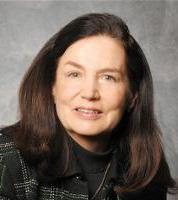
Julie Trocchio
During its April 1988 meeting, CHA's board of trustees chose to meet the challenges head-on by embarking on a prophetic path. The board authorized a year-long study of what Catholic health care organizations were doing for their communities, how they were doing it and how such activities could be reported. CHA hired Julie Trocchio to staff the project, engaged the Lewin Group to research the issue and commissioned a task force led by former CHA board chair Sr. Bernice Coreil, DC, to oversee the work.
The direction set by the CHA board was implicitly affirmed by author Rosemary Stevens when she delivered the annual Parker Francis Lecture to members of the American Hospital Association convention in 1990. She predicted that the 1980s era of competition and "ruthless managerialism" in health care would soon be over, replaced by a focus on the community services hospitals provide — services soon to be known as "community benefit."
Hospitals are "more than factories for treatment; they are social institutions through which the moral values of America are expressed," said Stevens, professor of social sciences at the University of Pennsylvania, Philadelphia, and author of In Sickness and in Wealth: American Hospitals in the 20th Century.
For the American health care community, Stevens said, it was clear that "part of their mission is to care about what happens in society as a whole, especially at the local level." However, she added ominously, "hospitals, in order to avoid over-regulation and justify their tax-exempt status, would need to tell that story."
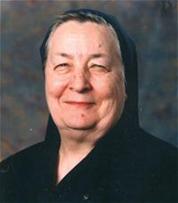
Sr. Bernice Coreil, DC
For Catholic health care, a sense of moral purpose was strongly rooted in the charisms of its religious founders; yet organizations were beginning to heed signs indicating that moral purpose, even when reflected by efforts and programs, was not enough. Organizations would have to be more explicit in telling their stories and more precise in clearly documenting the facts.
Any threat to tax exemption had to be taken very seriously. Funds derived from tax exemption allowed Catholic hospitals to continue the 250-year tradition of Catholic sisters going into communities to meet unmet needs. This was especially true in light of the host of financial challenges Catholic hospitals had faced during the 1980s. Catholic health care leaders were concerned that financial constraints could result in fewer funds being available for charity care and other community services.
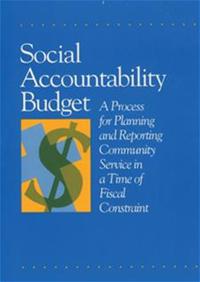
DATA GATHERING
The first step in addressing the concerns was to gather data — to assess what community services not-for-profit hospitals were providing — and, in this, CHA was well ahead of the curve. In her article in the Feb. 15, 1991, issue of Catholic Health World, Trocchio noted that Congress was looking at hospital tax-exemption as lost revenue and wanting to know what they were getting for that money. Were hospitals involved with their communities and working to address serious problems, homelessness, drug addiction and poverty?
By 1990, CHA preparations to address such pressing questions were well underway.
Although much work lay ahead, the foundation had been established with the Social Accountability Budget: A Process of Planning and Reporting Community Service in a Time of Fiscal Constraint. Published in 1989, it represented the first step in helping members provide the accounting for social services that their critics and Congress now sought. In addition to system-building and continuing the process of transferring leadership changes from religious communities to laity, the 1990s and 2000s would become, for CHA and its members, the era of working together to define community benefit and how it should be planned, implemented and reported. Much of CHA's work would be in collaboration with the VHA (originally, Voluntary Hospital Association).
Backed by new guidelines, the IRS in 1991 began to review tax returns of not-for-profit hospitals to determine whether, or to what extent, the hospital was benefitting the entire community, not just those able to pay. Teams of auditors focused on emergency room policies, Medicaid admissions and unpaid medical services. Auditors also sought information about whether individuals were illegally or unethically reaping financial gain, especially in those institutions with for-profit subsidiaries.In 1993, CHA complemented its Social Accountability Budget with a workbook designed to help Catholic and other not-for-profit health care organizations account for the broad provision of community services, including charity care, which distinguished them from for-profit health care organizations. CHA had long affirmed, and Congress had agreed, that the community benefit standard for hospitals was more comprehensive than providing charity care to persons unable to pay. The community benefit standard, they maintained, included medical research, health promotion and educational efforts aimed at the broader community as well as subsidizing services needed by communities, such as mental health and substance abuse programs, and prevention and health promotion programs for vulnerable people. CHA recognized the need to assist its members in providing more precise information about such services.
Further, CHA stepped up its advocacy for nonprofit health care in Washington, D.C., aimed at letting Congress know all that not-for-profit health care had done and was now doing to serve communities.
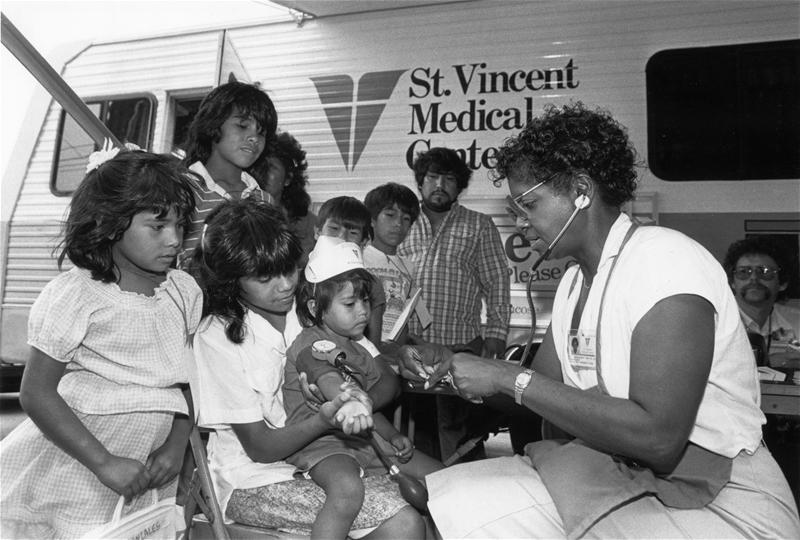
Health screenings for migrant families carried out by St. Vincent Medical Center in Toledo, Ohio, were among the many community services provided by Catholic health care and reported to the IRS in the 1990s.
REMEMBER MISSION
An ongoing, concerted push to voluntarily assess community health needs, develop programs and report community benefit was deemed essential. A high-level CHA task force on tax exemption, formed in 1991, determined that a lack of clear, consistent standards for charity care and community benefit made it difficult to demonstrate Catholic health care's comprehensive community role. The task force began developing voluntary standards based on CHA's Social Accountability Budget.
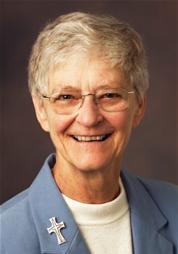
Sr. Mary Roch Rocklage, RSM
In a letter informing CHA members about the new task force, CHA president Jack Curley wrote, "While we are confident that Catholic institutions are responsive to community needs, we are concerned by the growing perception that America's not-for-profit hospitals are not benevolent, charitable organizations and that commercial values have overtaken the commitment to community service."
At that time, 22 states were facing hospital tax exemption challenges, according to an illustration in the May 15, 1991, issue of Catholic Health World.
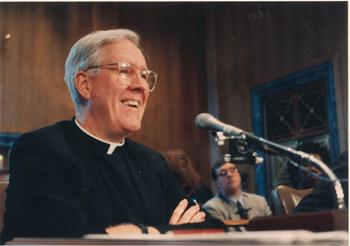
Monsignor Charles Fahey
Meanwhile, Catholic health care leaders looked to their own traditions to enhance mission awareness. Catholic sisters came to the fore to reassert the ministry's role of community service and their determination to carry it forward. Sr. Mary Roch Rocklage, RSM, president and CEO of the Sisters of Mercy Health System in St. Louis, spoke at a CHA-sponsored meeting of 30 system advocacy leaders in September 1991 urging that advocacy become "an alternative consciousness" aimed at keeping CEOs of Catholic health organizations socially conscious and proactive, while reaching out to legislators, church organizations and community leaders, as well as to the broader public.
Sr. Rocklage related the words of a former military general who served on a hospital board. He had told her, she said, that when soldiers have their backs to the wall and are uncertain what to do, their best defense is to "remember mission." For Sr. Rocklage's audience, mission awareness meant tying the current programs and services to benefit communities back to the religious congregations that had founded Catholic health care in the U.S.
She urged that, accordingly, advocacy should affect everything we do "as we keep our vision of who we are." The work, she said, is similar to that of the prophets "who were risk-takers and who knew the needs of the people and helped bring about change in society."
Those CHA members who were chafing at the threats to tax exemption were repeatedly reminded that underlying the issue of money was a deeper concern: erosion of public trust. In her article "Taxation as Metaphor" in the Jan.-Feb. 1992 issue of Health Progress, Emily Friedman, a health policy analyst in Chicago, warned Catholic health care leaders that the tax-exemption debate should be regarded as a wake-up call.
STANDARDS APPROVED
In 1992, based on the task force's recommendations, the CHA Board of Trustees approved a statement of CHA standards for community benefit and urged members to adopt them. (See sidebar below.)
In addition to these internal efforts, CHA continued to urge members to strengthen advocacy efforts with state and federal government agencies and, in concert with CHA's ongoing advocacy on behalf of universal health care, to remind their audiences that, in a nation where millions were uninsured, nonprofit health care organizations needed tax-exempt dollars to perform services that were morally the responsibility of government.
Among testimony by CHA representatives to congressional hearings in the 1990s, Monsignor Charles Fahey of Fordham University, Bronx, N.Y., spoke before the Senate Finance Committee, arguing that tax exemption, with its requirements for community benefit and its prohibition against private benefits, safeguards against "commercial values" overtaking the health care system.
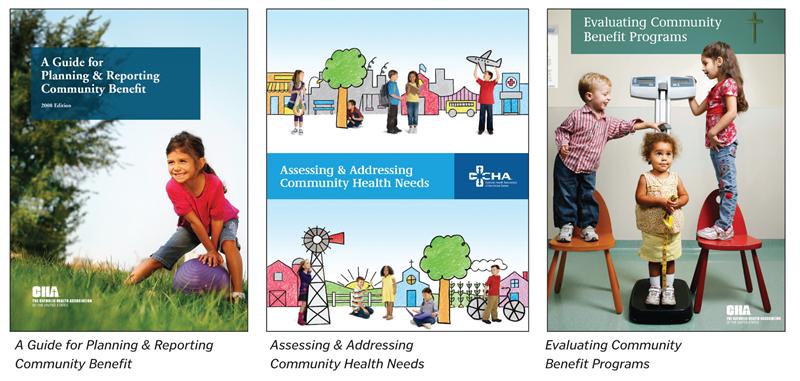
In principle, CHA supported many of the provisions of proposed bills aimed at tightening requirements for tax exemption — including those requiring hospitals to assess community health needs and develop a plan to meet those needs. CHA staff worked with House and Senate leaders, especially the House Ways and Means Committee and the Senate Finance Committee, to refine and clarify the content of proposed bills.
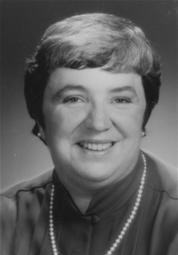
Sr. Julie Hyer, OP
LABOR UNIONS INVOLVED
In 1999, labor unions, as part of their organizing campaigns, aligned with Catholic health care's challengers. For example, the Service Employees International Union, in its campaign to organize employees at Catholic Healthcare West, published a document contending that the system's facilities were not fulfilling their charitable purpose, prompting the California state assembly's Committee on Health to investigate. CHA regarded it as indicative of the nation's mood that CHW was asked to defend its community benefits even though California already required not-for-profit hospitals to provide an annual accounting of their community benefits.
In testimony based on CHA's ongoing commitment to helping members respond to critics, Sr. Julie Hyer, OP, president of Dominican Santa Cruz Hospital in California, said critics had failed to account for all CHW did — in addition to $177 million in charity care and community benefit in 1998 alone, or 5 percent of the system's expenses — to build healthier communities, especially by means of preventive care and educational programs. If other systems were challenged in their home states, many of them could have given similar positive testimony based on CHA's evolving community benefit resources.
For example, in an interview with Catholic Health World, CHW President and Chief Executive Officer Dick Kramer praised CHA for developing the Social Accountability Budget. It had, he said, enabled Catholic health care organizations to prepare and strengthen reports to governmental agencies and better respond to critics.
That praise for CHA's foresight and persistent efforts would be echoed over and over in coming years.
Kramer said in the interview, "Perhaps the biggest lesson from the California experience is the need to tell your story before others do it."
"That's countercultural to Catholic health care," he said. "We tend to be quiet, compassionate community servants. We've never been forced to tell our story in the public arena, but that's changing."
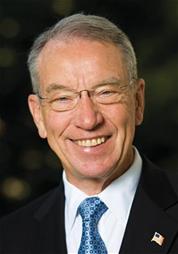
Sen. Charles Grassley, R-Iowa
PERSISTENT THEME
Throughout the 1990s and early 2000s, CHA made community benefit a major theme, providing resources to educate and assist members in the work of better evaluating and quantifying the broad range of community benefits they provided and encourage them to find more persuasive ways to describe those efforts to the public.
Meanwhile, the Social Accountability Budget evolved into increasingly sophisticated data collection and planning tools, and CHA's ongoing efforts for members in the 2000s included developing a stream of resources to inform and update members, including Catholic Health Assembly sessions, CDs, webinars, checklists for internal policy review and such continually updated printed materials as Community Benefit Reporting: Guidelines and Standard Definitions and the Guide for Planning and Reporting Community Benefit.
In 2006, CHA, in partnership with the VHA, offered to members a biennial conference that was dedicated to community benefit. That same year, Trocchio, now senior director of community benefit and continuing care, began providing a regular column on community benefit to CHA's journal, Health Progress.
PREPARATIONS PAY OFF
The result of all these activities was that when Sen. Charles Grassley, R-Iowa, chairman of the Senate Committee on Finance from 2003-2007, began investigating hospital community benefit, CHA and its members were ready.
What's more, CHA's diligent work had earned the respect of many members of Congress working on the issue. In an Aug. 1, 2006, letter from Sen. Grassley to Sr. Carol Keehan, DC, CHA's president and chief executive officer, he commended CHA's efforts and noted that the 142-page guide "is a valuable resource and should be utilized by all tax-exempt hospitals."
"Specifically," he wrote, "I was encouraged by the detailed approach explaining what items should be included in the analysis of acceptable forms of community benefit," an area of "much confusion."
Sr. Keehan warned members in a 2006 letter that "this is a crucial time for Catholic health care," and she urged them to employ CHA guidelines to create the next fiscal year's community benefit report and then provide it to CHA as a basis for creating an aggregate report the following spring. In a news release the next year, CHA was able to announce that its revised guidelines had been overwhelmingly adopted by member health systems (95 percent) and member hospitals (90 percent).
In the May-June 2007 issue of Health Progress, Sr. Keehan wrote: "The Catholic health care ministry has collectively pledged itself to the highest standards of accountability and has delivered on a promise of community commitment. For the first time ever, a major segment of not-for-profit hospitals is able to fully and credibly describe the extent of its community service contribution," in both financial and human terms.
"The real community benefit story," she added, is that through programs dedicated to address specific community health problems, "we change lives."
CHA's success in strengthening community benefit programs, improving and standardizing reporting practices and collaborating with government agencies had gone a long way toward rebuilding public trust. In addition, it was able to demonstrate to its members that Catholic health care was continuing to play a critical role in its services to communities, especially to the poor and underserved, through educational and needs-related programs that addressed a wide range of health-related issues.
By 2007, CHA was ready to launch a "Spread the Good News" campaign and announce its findings to a broad public via ads in national secular and Catholic newspapers such as USA Today and Our Sunday Visitor. The good news, based on CHA's efforts to assist and encourage Catholic health care organizations to accurately collect and report data, was that in a single year the Catholic health ministry had collectively contributed $5.7 billion to the nation in charity care and community benefit.
The next step would be to continue educating members about and working with the IRS to refine IRS 990 Schedule H for tax-exempt hospitals, which would officially roll out for trial in 2008.
Further, the work CHA did in community benefit and tax exemption from 1990 to 2010 prepared Catholic health care and all nonprofit health care organizations to meet new government requirements under health reform — the Affordable Care Act, which would become effective in 2012.
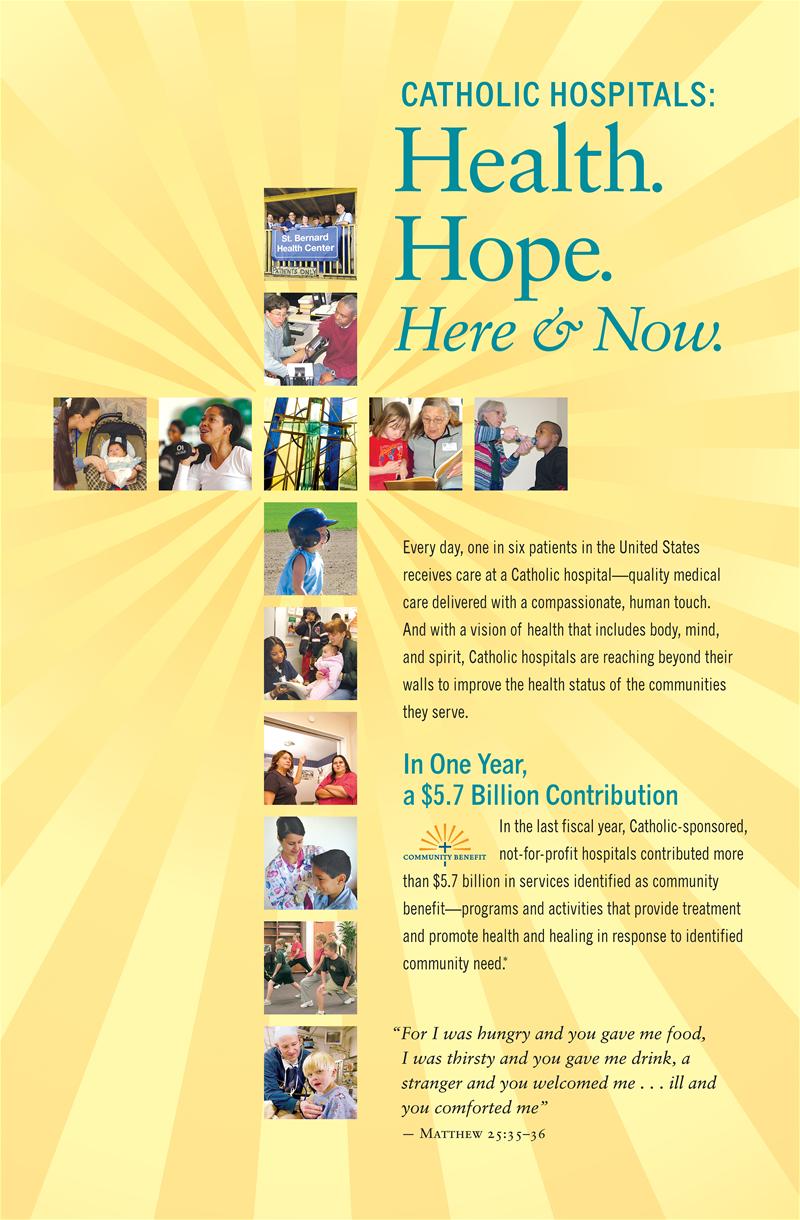
Highlighting the contributions of Catholic hospitals to communities throughout the country, this ad appeared in USA Today and Our Sunday Visitor in 2007.
PAMELA SCHAEFFER is a former editor of Health Progress.
Standards for Community Benefit
CHA standards for community benefit, approved by the board of trustees and published in Catholic Health World in June 1992, were as follows:
1. The organization should assure that mission statements and philosophy reflect a commitment to benefit the community and that policies and practices are consistent with these documents, including:
- Consideration of operational and policy decisions in light of their impact on the community served, especially the poor, the frail elderly and the vulnerable.
- Adoption of charity care policies that are made public and are consistently applied.
- Incorporation of community health care needs into regular planning and budgeting processes.
2. The governing body should adopt, make public and implement a community benefit plan that:
- Defines the organization's mission and the community being served.
- Identifies unmet health care needs in the community, including needs of the poor, frail elderly, minorities and other medically underserved and disadvantaged persons.
- Describes how the organization intends to take a leadership role in advocating communitywide responses to health care needs in the community.
- Describes how the organization intends to address, directly and in collaboration with physicians, other individuals and organizations:
– Particular or unique health care problems of the community
– Health care needs of the poor, the frail elderly, minorities and other medically underserved and disadvantaged persons
- Describes how the organization sought the views of the community being served and how community members and other organizations were involved in identifying needs and the development of the plan.
3. The health care organization should provide community benefits to the poor and the broader community that are designed to:
- Comply with the community benefit plan
- Improve health status in the community
- Promote access to health care services to all persons in the community
- Contain health care costs
4. The organization should make available to the public an annual community benefit report that describes the scope of community benefits provided directly and in collaboration with others. |
Copyright © 2014 by the Catholic Health Association of the United States
For reprint permission, contact Betty Crosby or call (314) 253-3477.